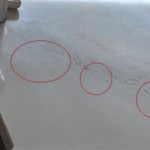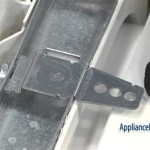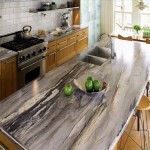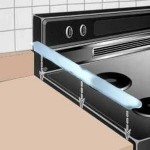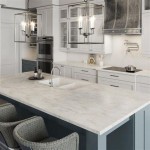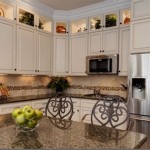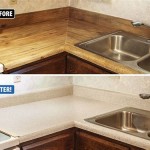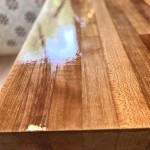DIY Countertops on a Budget: Transforming Your Kitchen Without Breaking the Bank
Kitchen and bathroom countertops are crucial both functionally and aesthetically. Refacing or replacing countertops can dramatically improve the look and feel of a space. However, professional countertop installation can be a significant expense. For homeowners looking to upgrade their surfaces without a hefty price tag, exploring DIY options presents an attractive alternative. This article examines several budget-friendly DIY countertop options, providing information on materials, techniques, and considerations for a successful project.
Choosing the Right Material: Cost-Effective Countertop Options
The material choice is often the most significant factor in determining the overall cost of a countertop project. Some materials, such as natural stone like granite or marble, involve considerable expense due to material cost, fabrication, and specialized installation. However, various alternatives offer similar aesthetic appeal at a fraction of the cost, making them viable options for DIY projects.
Laminate Countertops: Laminate countertops consist of a thin layer of decorative plastic laminate bonded to a substrate, typically particleboard or MDF (medium-density fiberboard). This makes them one of the most affordable countertop options available. Laminate is available in a wide array of colors, patterns, and textures, even mimicking the look of natural stone or wood. While pre-fabricated laminate countertops are readily available at home improvement stores, DIYers can also purchase laminate sheets and apply them to a custom-built substrate. Laminate is relatively easy to cut and install, requiring basic woodworking tools. However, it is important to properly bond the laminate to the substrate to prevent peeling or bubbling. Laminate is also susceptible to scratches and heat damage, so using cutting boards and trivets is essential.
Butcher Block Countertops: Butcher block countertops are made of strips of hardwood glued together, creating a durable and visually appealing surface. Wood species such as maple, oak, and walnut are commonly used. Butcher block offers a warm and natural aesthetic that complements a variety of kitchen styles. It can be purchased pre-fabricated or constructed from scratch using individual hardwood boards. While purchasing pre-fabricated butcher block countertops is an easier option, building one from scratch allows for complete customization of size, shape, and edge profile. Butcher block requires regular maintenance, including oiling with food-safe mineral oil to prevent drying and cracking. It is also important to avoid prolonged exposure to water, as this can cause warping. While less heat resistant than some other materials, butcher block is generally resistant to staining and minor cuts, and can be sanded down and refinished to remove scratches and imperfections.
Tile Countertops: Tile countertops offer a durable and customizable surface at a relatively low cost. Ceramic, porcelain, and glass tiles are all suitable for countertop applications. Tile is available in countless colors, shapes, and sizes, allowing for creative design possibilities. Installation involves applying thin-set mortar to a substrate and setting the tiles in place, followed by grouting to fill the gaps between the tiles. While tile is durable and heat resistant, grout lines can be prone to staining and require regular cleaning. Epoxy grout offers greater stain resistance than traditional cement-based grout but is more expensive and can be more difficult to apply. The uneven surface of tile countertops can also make them less ideal for certain tasks, such as rolling out dough. Despite these factors, tile remains a popular budget-friendly countertop option, particularly for smaller areas such as bathroom vanities or kitchen islands.
Concrete Countertops: Concrete countertops offer a modern and industrial aesthetic. While concrete can seem intimidating, it can be a manageable DIY project. The process involves creating a form, mixing and pouring the concrete, allowing it to cure, and then sealing and finishing the surface. Concrete countertops can be customized with various pigments, aggregates, and edge profiles. They are highly durable and resistant to heat and scratches. However, concrete is porous and requires sealing to prevent staining. Proper sealing is crucial to maintain the countertop's appearance and prevent the absorption of liquids. The weight of concrete is also a significant consideration, as it requires a strong and stable base. While the raw materials for concrete countertops are relatively inexpensive, the effort and patience required for a successful project should be taken into consideration.
Preparing the Substrate: Ensuring a Solid Foundation
Regardless of the countertop material chosen, proper preparation of the substrate is critical for a successful and long-lasting installation. The substrate provides the structural support for the countertop and must be level, stable, and free from defects. The substrate is typically constructed from plywood or MDF, depending on the specific requirements of the chosen countertop material.
Leveling and Reinforcement: Before installing the countertop material, it is essential to ensure that the existing cabinets are level. Shims can be used to correct any unevenness. The substrate should be securely attached to the cabinets using screws. For longer spans, additional support may be required to prevent sagging. This can be achieved by adding additional framing or using a thicker substrate material. When dealing with heavier countertop materials like concrete, the existing cabinets may need reinforcement to support the added weight.
Creating a Smooth Surface: The surface of the substrate should be smooth and free from imperfections that could telegraph through the countertop material. Any holes or cracks should be filled with wood filler and sanded smooth. The substrate should also be cleaned thoroughly to remove any dust or debris that could interfere with adhesion. For laminate countertops, a smooth and clean surface is particularly important to prevent bubbles or imperfections from appearing on the finished surface.
Waterproofing Considerations: In wet areas like kitchens and bathrooms, it is important to protect the substrate from moisture damage. Applying a waterproof membrane or sealant to the substrate can prevent water from penetrating and causing warping or rot. This is particularly important around sinks and faucets, where water spills are more likely to occur. Using marine-grade plywood for the substrate can also provide added protection against moisture. Failure to properly waterproof the substrate can lead to costly repairs down the line.
Installation Techniques and Finishing Touches: Achieving a Professional Look
Proper installation techniques and finishing touches are essential for achieving a professional-looking DIY countertop. This involves careful planning, precise measurements, and attention to detail.
Cutting and Shaping: Accurately cutting the countertop material to the desired size and shape is crucial. This requires using the appropriate tools and techniques for the specific material. Laminate can be cut with a circular saw or jigsaw, while tile requires a wet saw. Butcher block can be cut with a table saw or miter saw. Accurate measurements and careful cutting will ensure a seamless fit and prevent costly mistakes. For intricate shapes or curves, templates can be created to guide the cutting process.
Seaming and Edging: When joining two pieces of countertop material to create a larger surface, proper seaming techniques are essential. Laminate seams can be covered with seam filler, while tile seams are filled with grout. Butcher block seams should be tightly joined and glued. Edging provides a finished look and protects the edges of the countertop material. Laminate edging can be applied with contact cement, while tile edges can be finished with bullnose tiles or edge trim. Butcher block edges can be rounded over with a router or sanded smooth.
Sealing and Finishing: Sealing and finishing protect the countertop surface and enhance its appearance. Laminate countertops require minimal finishing, while tile countertops need to be sealed to protect the grout. Butcher block countertops require regular oiling with food-safe mineral oil to prevent drying and cracking. Concrete countertops need to be sealed to prevent staining. The type of sealant or finish used will depend on the specific material and the desired aesthetic. Applying multiple coats of sealant or finish, allowing each coat to dry thoroughly, will provide the best protection and durability.
By carefully considering these options and following proper installation guidelines, homeowners can effectively transform their kitchens and bathrooms with budget-friendly DIY countertops. The key to success lies in thorough planning, material selection appropriate for the skill level, and a commitment to careful execution. The reward is a beautiful and functional countertop that reflects personal style and provides lasting value.

15 Top Kitchen Countertops Ideas Remodelaholic

25 Amazing Diy Countertop Ideas You Can Make For

Affordable Diy Countertops That Will Blow Your Mind

10 Diy Countertops You Can Afford To Make Bob Vila
Diy Wood Countertop How To Pinterest Projects Home Improvement Ideas

Diy Countertops 10 Countertop Makeover Ideas On A Budget Painting Bathroom

Easy Diy Concrete Kitchen Counter Tops On A Budget Do It Yourself Fun Ideas

Affordable Diy Countertops That Will Blow Your Mind

How To Diy Laminate Countertops It Ll Save You So Much Money

10 Diy Countertops You Can Afford To Make Bob Vila
See Also

